Artificial Intelligence Applications : Top 10 Uses - Maximize your chances!
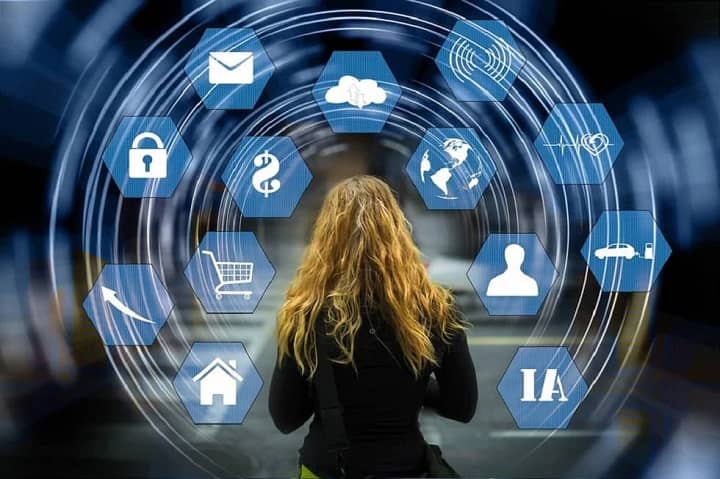
AI is transforming the way we live and work, with an impact that extends across many sectors. Here we present ten of the best applications of artificial intelligence:
1. Virtual assistants (Siri and Alexa)
2. Chatbots (Chap GPT, Dialogflow, BM Watson Assistant)
3. Image recognition (Clarifai)
4. Voice recognition (Siri, Alexa and Google Assistant)
5. Neural machine translation (Google translate and DeepL)
6. Recommendation systems (Amazon Personalize and Netflix recommendation)
7. Fraud detection (Feedzai and DataVisor)
8. Medical diagnosis (Zebra Medical Vision and Aidoc)
9. Robo-advisor (Ellevest)
10. Autonomous vehicles
AI is being used in a variety of applications, such as social networks, to deliver personalized content and notifications. Companies are discovering that this is an effective means of increasing customer engagement and cultivating long-term relationships with their customers.
Let's look at each of the 10 most popular AI applications:
1. VIRTUAL ASSISTANTS (Siri and Alexa )
Artificial intelligence-powered virtual assistants offer the ultimate automation solution for customer service, marketing, and general business tasks. They are compatible with a range of solutions that you can already use for these purposes and provide great added value for your business.
They offer smarter ways to improve customer experiences, build loyal bases, and offer personalized support. This can be achieved through various channels, such as chatbots, live chat on websites and messaging apps.
They perform tasks and respond to user requests through voice or text commands. Siri and Alexa are two of the most well-known virtual assistants that have gained immense popularity in recent years.
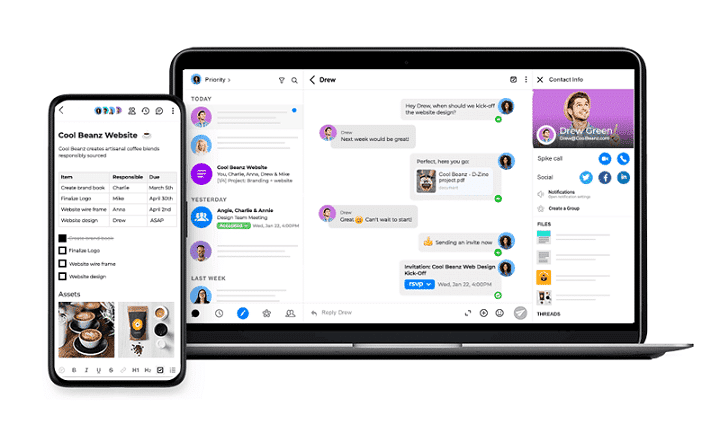
Key Features and Capabilities
Virtual assistants can perform a wide range of tasks, including setting reminders, answering questions, playing music, controlling smart devices for the home and much more. They can also learn continuously and improve their skills through automated learning algorithms.
Impact on Society and Future Potential
Virtual assistants have the potential to transform the way we live, work, and interact with technology. They have the potential to simplify our daily routines, increase productivity, and provide new opportunities for innovation and creativity.
"Join the AI Revolution and Embrace the Power of Virtual Assistants Today!" "Unlock the Full Potential of Virtual Assistants by Being an Early Adopter Now!"
Artificial intelligence

2. Chatbots with artificial intelligence (Chap GPT)
Since the beginning of the internet, businesses have been looking for effective ways to communicate with their customers. In this context, chatbots have emerged as a solution. Chatbots are automated conversation programs designed to simulate a human interaction.
These programs can be found in many applications and websites, where they are used to help customers get information, solve problems, and make transactions. Chatbots also provide personalized assistance 24/7, improving the customer experience.
AI bots use natural language processing and machine learning to interpret conversation requests and offer responses. Additionally, they learn from their interactions with customers, perfecting their capabilities over time.
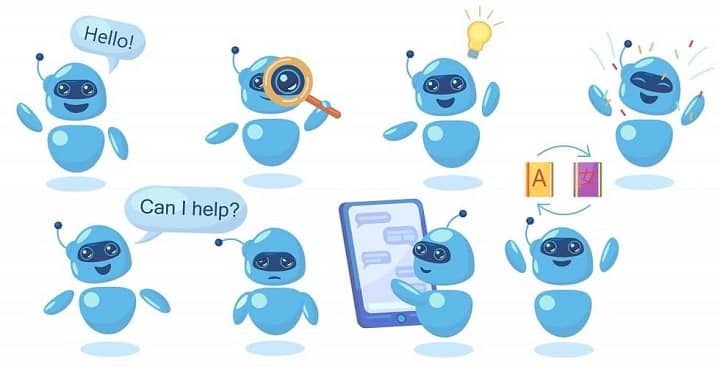
Chatbots are capable of processing large amounts of information in real-time. They can access online databases to provide answers to customer questions, making them very useful for businesses that receive many similar requests.
Furthermore, chatbots can be designed to work in multiple languages and be customized to fit each company's needs. They use predefined scripts to answer frequently asked questions.
Although chatbots are popular, they also have limitations. At times, they may not understand customer questions, which can result in wrong or inappropriate responses. Additionally, some customers prefer to talk to a human instead of a computer program.
Nevertheless, chatbots remain valuable to businesses looking to strengthen their relationship with customers. By providing personalized and quick assistance at any time, chatbots can generate customer satisfaction and improve brand image.
In summary, chatbots are digital-age virtual assistants that provide a new form of communication for businesses. With their ability to process large amounts of information in real-time, they can improve the customer experience and strengthen their relationship with them.
Two leading companies offering Chatbots with AI services are "Dialogflow" and "IBM Watson Assistant".
Dialogflow
Dialogflow is a Google Artificial Intelligence platform that allows businesses to create and deploy Chatbots on multiple messaging platforms, such as Facebook Messenger, Telegram, Slack, among others. It uses natural language processing (NLP) techniques to understand and process user questions and answers effectively. The platform also has automation and data analysis tools to improve the efficiency and quality of the Chatbot.
IBM Watson Assistant
IBM Watson Assistant is another AI-powered Chatbot platform that uses machine learning techniques to understand users' natural language and provide accurate and personalized responses. It allows integration with a wide variety of communication channels, including chat applications, email, virtual assistants, and websites. Additionally, the platform has analysis and tracking tools to measure the effectiveness of the Chatbot and continuously improve it. IBM's solution also offers the possibility to use a custom dialogue engine to tailor the conversation to each company's specific needs.
3. Image Recognition (Clarifai)
Image recognition with AI is the process of classifying and recognizing images in real-time, using a vast dataset combined with machine learning models.
Computers perceive images differently than humans do; they interpret them as vector or raster graphics with numerical values for image elements (pixels). They use these pixel patterns to recognize objects and distinguish between their different physical features. AI models are trained on a large set of image inputs and then generate one or more target classes tagged with confidence scores indicating the probability that an image belongs to that class.
Training an AI model requires a large dataset with many examples of each class, which can be obtained through supervised or unsupervised learning techniques.

Clarifai (AI Image Recognition Services)
A company that provides image recognition services using artificial intelligence is "Clarifai" (https://www.clarifai.com/).
Clarifai is an artificial intelligence platform that specializes in image and video recognition through machine learning algorithms. The platform uses a convolutional neural network (CNN) to analyze and understand the features of the images, and then tag and classify them according to their content.
4. Voice Recognition (Siri, Alexa and Google Assistant)
Artificial intelligence voice recognition is a technology that allows machines to understand and act on spoken instructions. It forms the basis of Siri, Alexa and Google Assistant, all of which have revolutionized person-to-machine communication by simplifying our lives.
AI voice recognition can be used in various ways, such as transcription, hands-free calls and user verification. It also helps people who are deaf or hearing impaired, as well as people with disabilities.

A cell phone app that uses AI for voice recognition is "Shazam" to recognize music, telling you the name of the song and the artist.
Challenges for artificial intelligence in voice recognition;
- Voice recognition is a sophisticated technology that requires extensive training and data to work. It must be able to understand and distinguish between different accents, dialects and unique language patterns.
- It must also be able to distinguish between normal speech and jargon. This can be a challenging feat due to the many variables that come into play.
Therefore, it is essential to provide the system with a vast amount of information. Doing this will give the system a more diverse vocabulary and a better understanding of how to process the information received from its users.
watch this interesting video:

5. Neural machine translation (Google translate and DeepL)
Tools such as Deepl and Google Translate use neural machine translation with AI to translate text and voice in real time, facilitating communication between people of different languages.
Neural machine translation uses artificial intelligence (AI) to translate text between languages. This technology has been used to improve the fluency and accuracy of translations, as well as to provide automatic language translation services for companies that must communicate with global audiences.
Neural machine translation can create fluent, natural-sounding translations that sound very similar to human speech. This is a major advantage over previous machine translation models, which were limited to translating word-for-word or sentence-for-sentence.
Because neural machine translation systems use a large training data set to train their algorithms, they can be programmed to interpret and predict the meaning of text in many different ways. For example, they can identify the most relevant part of a source sentence and use that as the basis for translating it. They can also take into account the context in which a word is used to obtain more information about its true meaning.

Neural machine translation differs from traditional rule-based machine translation in that it relies on deep learning algorithms that learn from past mistakes and improve over time without additional training. This type of machine translation provides faster, more accurate and reliable translations than its rule-based engine counterpart.
6. Recommendation systems (Amazon Personalize and Netflix recommendation system)
Are you tired of wasting hours searching for something interesting in a sea of options? Thanks to artificial intelligence, entertainment platforms like Netflix and Amazon have found a solution to that problem. With personalized recommendation systems for each user, you'll never have to worry about finding something you like again.
But how is this possible? These systems combine machine learning techniques and data analytics to understand how users interact with content. With that information, they can make accurate and relevant recommendations based on your tastes and preferences. And best of all, as you use the platform, the system will further improve and refine its recommendations for you.
But that's not all. AI recommendation systems are also a valuable tool for entertainment companies. By having a deeper understanding of users' tastes and preferences, they can make more informed decisions about what content to produce and distribute, which in turn maximizes their reach and impact.
"Amazon Personalize" and Netflix's recommendation system. Both use advanced AI technologies to deliver personalized recommendations to their users, resulting in a more satisfying user experience and increased loyalty.
Amazon Personalize
Amazon Personalize is a recommendation service from Amazon Web Services (AWS) that uses deep learning techniques to provide personalized recommendations to customers. The platform analyzes user behavior and preference data to deliver accurate product and content recommendations in real time. Amazon Personalize also has an API that enables integration with third-party applications and services.
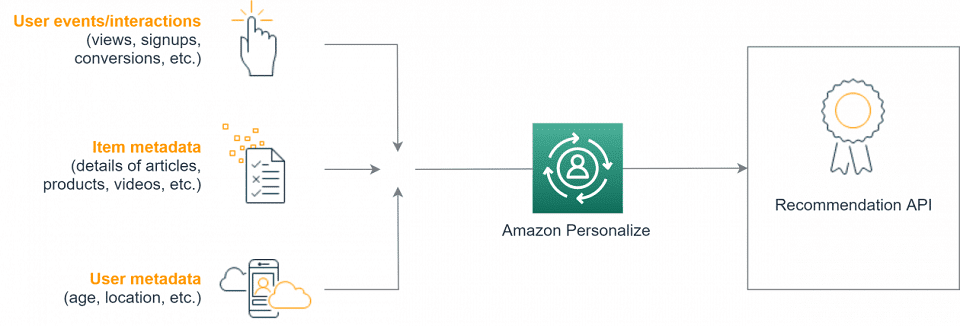
"Platforms like Netflix and Amazon use AI to personalize content recommendations based on each user's history and preferences."
Netflix recommendation system
Netflix's recommendation system is one of the most popular recommendation systems and uses machine learning techniques to provide personalized content recommendations to its subscribers. The platform analyzes the user's viewing history, rating of movies and shows, searches and previous interactions to suggest relevant and personalized content. In addition, Netflix's recommendation system is continuously updated to improve the accuracy and relevance of recommendations. The system also uses natural language processing (NLP) techniques to analyze and tag shows and movies based on their content and genre.
In short, AI recommendation systems are a revolutionary way to enhance your entertainment experience and improve the efficiency of entertainment companies. Why settle for conventional when you can be blown away by AI technology? Find out how it will change the way you enjoy content today!

7. Fraud detection with artificial intelligence (Feedzai and DataVisor)
AI-based fraud detection systems are designed to detect suspicious activity by analyzing patterns and generating alerts based on the data collected.
The financial sector has always been at the forefront of adopting cutting-edge technologies to improve transaction security and prevent fraud. With the advent of artificial intelligence (AI), fraud detection systems have taken a leap forward, delivering highly accurate and efficient results.
One of the most prominent areas of AI application in the financial sector is credit card fraud detection. With the increasing number of online transactions, it has become imperative for financial institutions to have a robust system in place to detect and prevent fraudulent activities. Traditional fraud detection systems rely on predefined rules and manual interventions, which are often time-consuming and prone to human error. On the other hand, AI-based fraud detection systems use advanced algorithms and machine learning techniques to identify and flag unusual patterns in real time. This ensures that potential fraud is detected and prevented even before it occurs.
AI-based fraud detection systems use multiple data sources, such as transaction history, demographic information and behavioral data, to build a complete profile of each user. This data is then analyzed to identify any suspicious activity that deviates from the norm. For example, if a user's spending habits suddenly change, or if a transaction takes place in an unusual location, the system will flag it as potentially fraudulent and generate an alert.
AI is also used in other areas of the financial sector, such as:
- Insurance fraud detection
- Anti-money laundering
- Cybercrime prevention
Thanks to its ability to process large amounts of data in real time and make highly accurate predictions, AI has revolutionized the way the financial sector works, making transactions faster, safer and more reliable.
If you are looking for companies that provide AI fraud detection services, I can recommend two excellent options that you will love Feedzai and DataVisor.
Feedzai
Feedzai, an amazing platform that uses advanced machine learning techniques and behavioral analytics to detect fraudulent patterns in real time, is perfect for financial institutions and e-commerce companies looking to prevent fraudulent activity and protect their customers!
DataVisor
is a highly innovative fraud detection company that uses artificial intelligence techniques such as machine learning and natural language processing to detect and prevent fraud in real time. Their platform is perfect for businesses in a variety of industries, including banking, e-commerce and online gaming!
In addition, both companies have data analysis and visualization tools to help clients identify problem areas and address fraud issues effectively.
8. Medical Diagnostics (Zebra Medical Vision and Aidoc)
AI is helping physicians not only to make faster and more accurate diagnoses, but also to identify patterns and trends in medical data.
One of the significant advantages of AI in medical diagnostics is its ability to process large amounts of data at lightning speed. By analyzing patient information such as medical history, symptoms and test results, AI algorithms can help doctors identify the root cause of a patient's symptoms, ultimately leading to more effective and timely treatments.
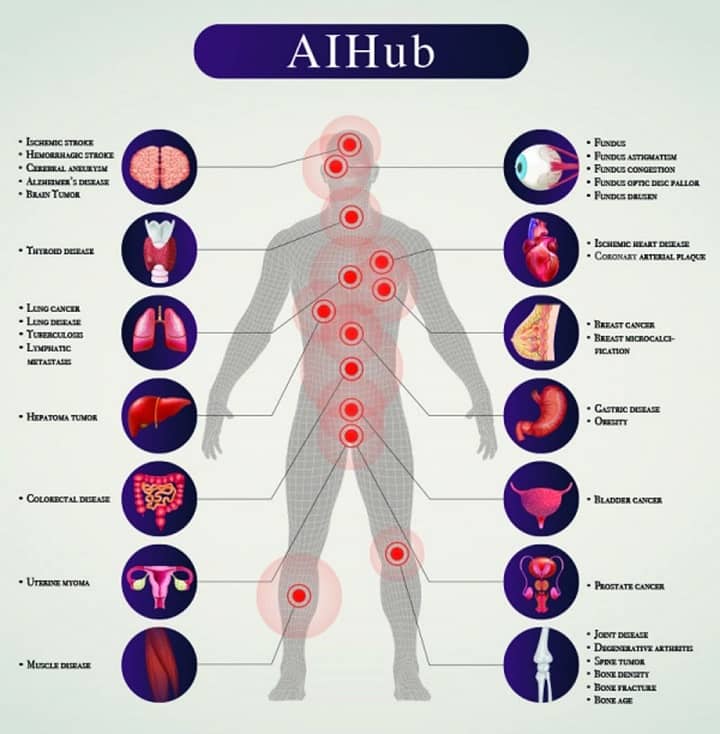
Moreover, AI's data analytics capabilities are not limited to patient information. The technology can also be used to detect disease outbreaks, track the spread of infections and monitor the effectiveness of treatments. This information can be used to develop new treatments and preventive measures, making healthcare more proactive and effective.
Another crucial aspect of AI in medical diagnostics is its ability to help physicians make informed decisions. AI algorithms can analyze patient data and provide physicians with a list of possible diagnoses based on symptoms and test results. This can provide physicians with a better understanding of the patient's condition and help them choose the most appropriate treatment.
It is worth mentioning that AI is not a substitute for human expertise and judgment. Although AI algorithms are incredibly useful, they are only as good as the data they have been trained on and cannot always accurately diagnose complex or rare diseases. Therefore, it is essential to use AI in conjunction with human expertise to ensure the best possible outcomes for patients.

Zebra Medical Vision
Zebra Medical Vision is a leader in the field of artificial intelligence-assisted medical diagnostics. The platform uses advanced deep learning algorithms to analyze medical images, such as CT scans and X-rays, and provide fast and accurate diagnosis. Zebra's Medical Vision platform is widely used in hospitals and medical centers around the world and has been recognized for its ability to help physicians identify pathologies at an early stage.
Aidoc
Aidoc is another company that focuses on medical detection and diagnosis with artificial intelligence. Aidoc's platform uses deep learning algorithms to analyze medical images and detect pathologies at an early stage. The platform focuses on specific pathologies, such as early detection of stroke and identification of traumatic injuries. Aidoc's platform is designed to integrate with radiologists' workflow and improve the efficiency and quality of diagnoses.
AI has the potential to transform medical diagnostics, providing physicians with the tools they need to make faster, more accurate diagnoses and ultimately improve patient outcomes. By leveraging AI's data analytics capabilities, medical professionals can deliver better patient care and drive positive public health outcomes.
9. Robo-advisor with artificial intelligence (Ellevest).
Artificial intelligence (AI) robo-advisors are becoming increasingly popular on online investment platforms. This type of technology uses AI to provide personalized financial advice and automate portfolio management. AI-enabled robo-advisors can help investors by automating their portfolio management processes. For example, by using algorithms to track market trends, robo-advisors can automatically adjust their portfolio to maximize gains and minimize losses.
In addition, AI-enabled robo-advisors can also provide personalized financial advice based on each investor's financial goals and personal circumstances. By using algorithms to analyze financial data, robo-advisors can provide recommendations on the most suitable investments for each individual.
However, it is important to note that robo-advisors are not infallible. They cannot take into account all factors that can influence financial markets, such as government policies or global economic events. In addition, the algorithms used by roboadvisors are only as good as the data they have been trained on, which can lead to errors in recommendations.
AI-enabled robo-advisors can be a valuable tool for investors by providing personalized financial advice and automating portfolio management. However, it is important to understand the limitations of this technology and not rely solely on the advice provided by a robo-advisor. It is always best to consult a qualified financial advisor for comprehensive and personalized advice.
Ellevest robo-advisor
Ellevest is an online robo-advisor that uses artificial intelligence to help investors with their financial future. Licensed by the U.S. Securities and Exchange Commission, Ellevest creates personalized investment plans tailored to users' individual monetary goals.
Its algorithms take into account gender-specific salary curves and longevity data to create investment portfolios tailored to women's financial needs. It also promotes ESG (Environmental, Social and Corporate Responsibility) and ethical investing.
10. Autonomous and interconnected vehicles with AI

AI is driving the development of autonomous vehicles and interconnected technologies, such as drones, which can be controlled and monitored remotely. Autonomous vehicles are an example of how AI can improve people's lives. These vehicles can reduce traffic accidents, as they use algorithms to assess driving situations and make decisions faster and more efficiently than human drivers. In addition, autonomous vehicles can improve traffic efficiency by communicating with each other to avoid congestion.
Interconnected technologies, such as drones, can be used for applications such as surveillance and delivery of goods. Drones can be used to inspect infrastructure such as power poles or high-rise buildings, which can be dangerous for human workers. In addition, drones can deliver products to hard-to-reach locations, which can improve delivery efficiency.
However, the development of these technologies also presents ethical and safety challenges. For example, autonomous vehicles must be programmed to make ethical decisions in emergencies, such as choosing the least bad option to minimize damage. In addition, drones can be used for illegal activities such as spying or drug delivery.
These autonomous vehicles with artificial intelligence will help us a lot but it is important to ensure that these technologies are developed responsibly to minimize risks to security and human rights. Governments and companies must work together to ensure that these technologies are used ethically and safely for the well-being of all.

Conclusion
In conclusion, artificial intelligence is a rapidly growing field with a wide range of applications that have the potential to revolutionize diverse industries. From virtual assistants and chatbots to image and voice recognition, language translation and recommendation systems, AI is changing the way we interact with technology. In the financial sector, AI is being used for fraud detection and robo-advisory services.
In the medical field, AI is helping to diagnose diseases and improve patient outcomes. In addition, the development of autonomous and connected vehicles is going to profoundly change the transportation sector. Whether you are an individual or a business, it is important to understand these applications of AI and how they can be leveraged to maximize your opportunities. By staying informed and adapting to these developments, you can ensure you stay ahead of the curve and take full advantage of the benefits AI has to offer.
When deciding whether or not to implement AI, companies should evaluate their return on investment and what benefits they need from it. Common business cases for AI generally revolve around cost savings, improved process speed and enhanced customer experience.

Leave a Reply